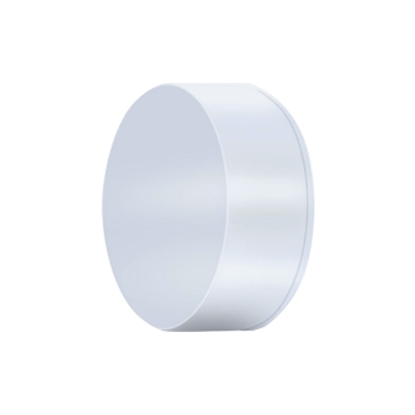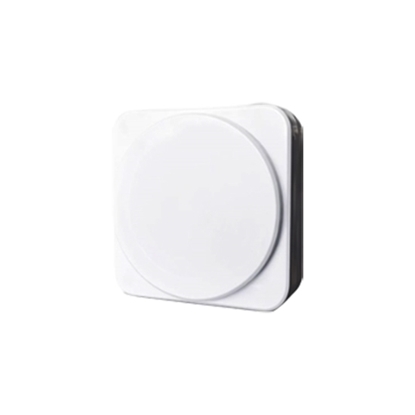- Home
-
Motors
-
Motor Controls
- Power Supplies
-
Passive Components
- Back
- Capacitors
- Circuit Breakers
- Connectors
-
Resistor
- Back
- Metal Film Resistor
- Contactors
- Current Transformer
- DIP Switch
- Electronic Ballast
- Filters
- Float Valves
- Foot Switch
- Forward Reverse Switch
- Fuse
- Hook-Up Wire
- Indicator Light
- Isolator Switch
- Junction Box
- Joystick Switch
- Knife Switch
- LED Machine Light
- Laser Module
- Locking Plugs
- Low Noise Amplifiers
- Magnetic Starter
- Micro Switch
- Over Voltage Protector
- PV Combiner Box
-
Potentiometer
- Back
- Rotary Potentiometer
- Potential Transformer
- Pressure Switch
- Push Button
- Rectifier
- Relays
- RF Attenuators
- Rocker Switch
- Rotary Switch
- Surge Protection Devices
- Tact Switch
- Terminal Block
- Timer Switch
- Toggle Switch
- Transfer Switches
-
Sensors
- Back
- Accelerometer Sensor
- Angle Sensor
- Air Quality Sensor
- Current Sensor
- Compass Sensor
- Conductivity Sensor
- Displacement Sensor
- Encoder
- Fiber Sensor
- Flow Switch
- Float Switch
- Gyroscope Sensor
- Gas Sensor
- Inclinometer Sensor
- Ion Selective Electrode
- Load Cell
- Load Cell Transmitter
- Level Sensor
- Laser Sensor
- Limit Switch
- Light Curtain
- Magnetic Cylinder Sensor
- Noise Sensor
- Power Transducer
- Proximity Sensor
- pH Electrode
- Pressure Sensor
- PM Sensor
- Presence Sensor
- Photoelectric Sensor
- Radiation Sensor
- Reference Electrode
- Rain Sensor
- Signal Isolator
- Safety Switch
- Strain Gauge
- Speed Sensor
- Soil Moisture Sensor
- Temperature Sensor
- Temperature and Humidity Sensor
- Torque Sensor
- Ultrasonic Sensor
- Voltage Sensor
- Vibration Transmitters
- Water Leakage Sensor
- Water Quality Sensor
- Wind Sensor
-
Test & Measurement
- Back
- Anemometer
- Air Quality Monitor
- Clamp Meter
- Crane Scale
- Colorimeter
- Current Transformer Tester
- Conductivity Meter
- Digital Panel Meter
- Digital Counter
- Digital Readout
- Dew Point Meter
- Digital Inclinometer
- Digital Torque Adapters
- Density Meter
- Distance Meter
- Dynamometer
- Digital Tachometer
- Digital Indicator
- Dielectric Oil Tester
- Digital Manometer
- Diameter Gauge
- Energy Meter
- Earth Resistance Tester
- Electronic Analytical Balance
- Electronic Load
- Electronic Compass
- Flow Meters
- Function Generator
- Force Gauge
- Feeler Gauges
- Gas Detectors
- Gloss Meter
- Gauss Meter
- Hipot Tester
- Hardness Tester
- Height Gauges
- Handheld Ultrasonic Homogenizer
- Infrared Thermometers
- Insulation Tester
- Linear Scale
- LCR Meter
- Laser Levels
- Lux Meter
- Land Meter
- Moisture Meter
- Multimeter
- Metal Detector
- Measuring Wheel
- Micrometers
- Measuring Tapes
- Nuclear Radiation Detector
- Network Cable Tester
- Oscilloscopes
- Optical Time Domain Reflectometer
- Oil Tank Gauge Tape
- pH Meter
- Paperless Recorder
- Pressure Gauge
- Particle Counter
- Power Meter
- Power Meter Plug
- Protractor
- Pipe Blockage Detector
- Particle Size Analyzer
- Relay Tester
- Refractometer
- Rebound Hammer
- Rebar Scanner
- Spectrophotometers
- Sound Level Meter
- Smoke Detector
- Solar Power Meter
- Surface Roughness Tester
- Signal Generator
- Stud Finder
- Temperature Controller
- Temperature Data Logger
- Thickness Gauge
- Tension Meters
- Turbidity Meter
- USB Tester
- Viscometer
- Vibration Meter
- Vernier Caliper
- Volt Amp Meter
- Water Quality Tester
- Water Leakage Detectors
-
Transmission & Actuator
- Back
- Air Filters
- Air Hose Fittings
- Angle Seat Valves
- Ball Valves
- Bearings
- Brakes and Clutches
- Butterfly Valves
- Check Valves
- Control Valves
- Diaphragm Valves
- Door Opener
- Drag Chain
- Expansion Joints
- Filling Valve
- FRL Unit
- Gate Valves
- Gearbox
- Globe Valves
- Hand Valves
- Hydraulic Accumulators
- Hydraulic Actuator
- Hydraulic Cylinders
- Linear Actuators
- Linear Rail
- Linear Slide
- Needle Valves
- Pinch Valves
- Plug Valves
- Plunger Valves
- Pneumatic Cylinders
- Pneumatic Foot Pedal
- Pressure Regulator
- Pressure Relief Valves
- Pulse Valves
- Quick Connector
- Quick Exhaust Valves
- Shaft Coupling
- Shuttle Valves
- Slip Ring
- Solenoid Valves
- Steam Traps
- Strainers
- Torque Limiters
- Universal Couplings
- Vacuum Generator
- Valve Actuators
- Vent Plug
-
Pumps
- Back
- Aerator Pump
- Booster Pump
- Bilge Pump
- Centrifugal Pump
- Dosing Pump
- Diaphragm Pump
- Fire Pump
- Gear Pump
- Hydraulic Pump
- Hot Oil Pump
- Lobe Pump
- Lubrication Pump
- Magnetic Drive Pump
- Mud Pump
- Peristaltic Pump
- Piston Pump
- Pool Pump
- Rotary Hand Pump
- Screw Pump
- Self Priming Pump
- Sewage Pump
- Sliding Vane Pump
- Vacuum Pump
- Well Pump
- Wing Pump
-
Tools
- Back
- Alarm & Siren
- Beam Trolley
- Beam Clamp
- Blower
- Centrifuge Machine
- Circular Saws
- Cable Cutter
- Crimping Tool
- DC Cooling Fan
- Desoldering Tool
- Endoscope
- Electric Pressure Washer
- Foam Cutter
- Flange Spreader
- Flashlight
- Generator
- Glass Lined Reactor
- Heat Exchanger
- Hydraulic Punch
- Hoist
- Heat Gun
- Hydraulic Puller
- Hydrothermal Synthesis Reactor
- Impact Wrenches
- Inkjet Printer
- Jack
- Lifting Hook
- Labour Protection Appliance
- Magnetic Stirrer
- Magnetic Sweepers
- Portable LED Work Light
- Pipettes
- Pneumatic Screw Driver
- Plate Clamp
- Pneumatic Drill
- Pipe Bender
- Rubber Sheets
- Reciprocating Saw
- Rebar Tool
- Rotary Evaporator
- Sander
- Screw Feeder
- Soldering Tool
- Safety Mat
- Snatch Block
- Spring Balancer
- Strapping Tool
- Wire Stripper
- Winch
-
Communication & Controller
-
Industrial Equipment
- Back
- Air Compressors
- Chamfering Machines
- CNC Router Machine
- Dryer
- Dehumidifier
- Fume Extractor
- Fan Heater
- Industrial Cameras
- Industrial Vacuum Cleaner
-
Laser Machines
- Back
- Laser Marker
- Oil Mist Eliminators
- SCARA Robot
- Static Eliminator
- Steam Autoclave Sterilizer
- Tool Setter
- Ultrasonic Cleaner
- Water Chiller
- Welding Machine
- Water Purification System
- Technical Support
- How To Buy
- Contact
- Chat
Presence Sensor
mmWave Human Presence Sensor, RS485/LoRa/LoRaWAN Output
mmWave Radar Presence Sensor, RS485 Output
A presence sensor is a type of sensor designed to detect whether a person (or sometimes an object) is present in a given area. Unlike simple motion detectors that only respond to movement, presence sensors can continuously monitor and confirm if someone remains in the detection zone, even when they are relatively still.
How does it work?
Presence sensors typically rely on one of several technologies:
- Passive Infrared (PIR): Detects variations in infrared radiation produced by body heat. When a person enters or moves within the sensing range, the temperature change is captured and interpreted as presence.
- Ultrasonic: Continuously emits ultrasonic sound waves and measures changes in their reflections. Even small movements like hand gestures or slight posture shifts can be detected, making it more sensitive than PIR.
- Microwave / Millimeter Wave Radar: Uses high-frequency electromagnetic waves to sense extremely subtle motions, such as chest movements from breathing or slight body shifts. This allows accurate detection even if the person is seated or resting.
- Optical / Camera-Based: Employs image recognition or depth-sensing technology to identify humans in a monitored area. These systems can distinguish people from objects, offering detailed detection but often requiring higher processing power and consideration of privacy.
Applications
Presence sensors are used in a wide variety of industries and everyday scenarios because of their ability to reliably detect when people are in a space:
- Smart Lighting and Building Automation: In offices, schools, or public buildings, presence sensors can keep lights on as long as people are inside and automatically switch them off when the room is empty. This reduces energy waste and enhances convenience.
- HVAC and Energy Management: Presence sensors are integrated into heating, ventilation, and air conditioning systems to optimize performance. For example, if a conference room is empty, the system can reduce airflow or adjust the temperature, saving significant energy costs.
- Security and Safety: In smart homes and commercial buildings, presence sensors can act as a layer of security by detecting unauthorized entry or suspicious movement, even when the person is sitting still.
- Automotive Applications: Modern cars use presence sensors to detect occupants, helping with seatbelt reminders, adjusting climate control automatically, and ensuring airbags deploy correctly in an accident. Some advanced systems also detect child or pet presence to prevent heatstroke in parked cars.
- Healthcare and Elderly Care: In hospitals or senior living facilities, presence sensors can monitor patients without needing cameras, ensuring privacy. They can detect if a patient has been inactive for too long or left their bed unexpectedly, alerting caregivers.
- Retail and Public Spaces: Presence sensors can help manage lighting, digital signage, and interactive displays, ensuring they activate only when customers are nearby, improving both engagement and efficiency.
Difference from Motion Sensors
Although both presence sensors and motion sensors serve to detect activity, their capabilities and use cases differ significantly. Presence sensors differ from motion sensors in that they can detect even micro-movements like breathing, while motion sensors only respond to clear activity such as walking. This makes presence sensors reliable for confirming someone remains in place, preventing issues like lights shutting off when people sit still. Motion sensors usually rely on simple PIR technology, whereas presence sensors often use ultrasonic or millimeter-wave radar for higher sensitivity. As a result, motion sensors suit hallways or entrances with frequent activity, while presence sensors are ideal for offices, classrooms, or healthcare spaces where people may stay still but still need to be detected.
- +1 800-585-1519 (Toll-free)
- sales(at)ato.com
- Global Shipping



